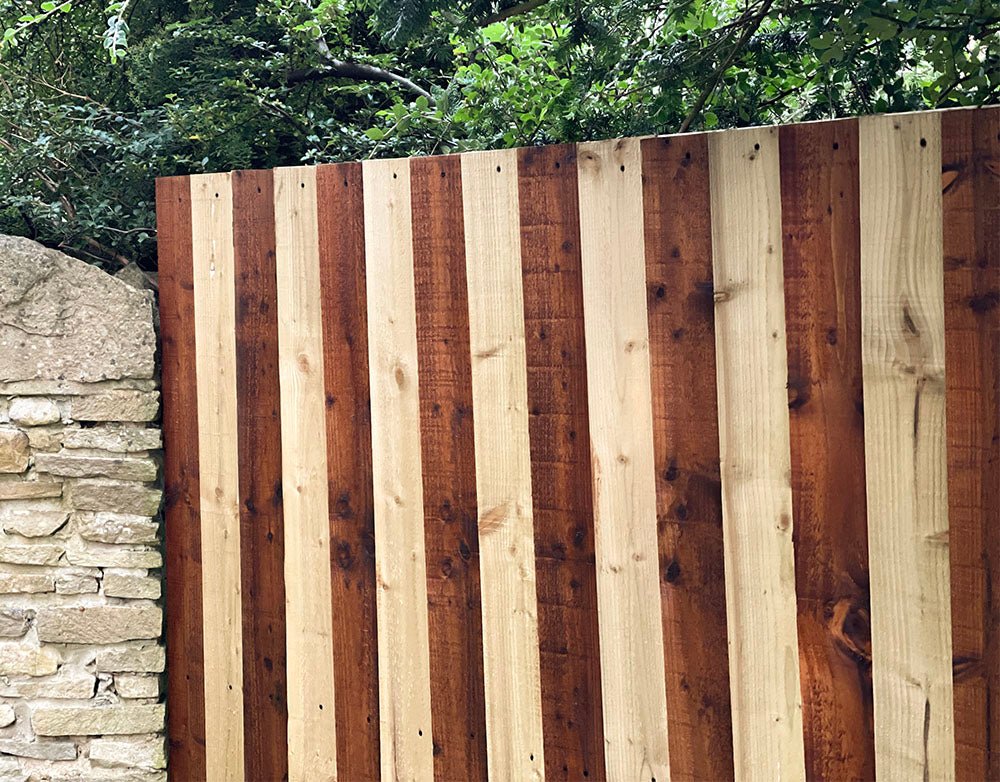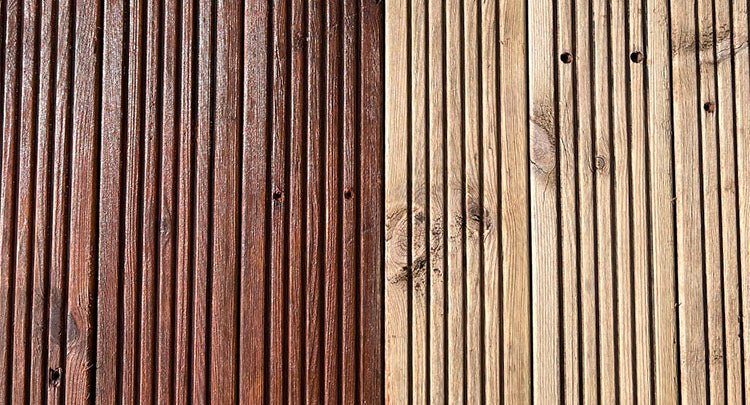Adding a lick of garden paint to your old fences, sheds, benches, flower pots and garden furniture can transform your outside space and make it appealing to enjoy again.
How do you go about finding the right colour and then make sure it lasts?
We are here to help with this ultimate guide to garden paint, with direct colour swatch comparison, and how to apply the paint for the best and longest lasting results.
So the garden is looking tired but the weather is getting warm. The fantasy of enjoying a cold Aperol on a hot day in a stylish garden seems far away.
Obviously we can’t control the English weather, but we can help you get your garden looking great in time for that long awaited heat wave.
The two main contenders on the market for the best garden paint are Ronseal Garden Paint and Cuprinol Garden Shades Paint. These two exterior paints give a solid, opaque colour. Unlike fence preservers, such as Cuprinol Shed and Fence Preserver and Barrettine Premier Wood Preserver, which are translucent, showing the wood grain and texture fully through the stain.
These garden paints are perfect to use on wood, brick, terracotta and metal. However, they aren’t recommended for plastics, iron or decking (as they’re not suitable to be walked on).
The first decision is obviously colour. Below are the complete colour swatches for both Cuprinol Garden Shades and Ronseal Garden Paint:

Cuprinol do tend to have certain, brighter, colours such as beach blue and dazzling yellow only in the smaller 1 litre tins.
They tend to be used on flower pots and chairs rather than "en masse" on fence panels - not to say you couldn't if you really wanted your garden to dazzle!
Colour styling

For a natural, country look, go for creams, pastel greens and light blues.
For a modern, urban look there are a range of dark and light greys, dark browns and off-whites.
For a classic and understated look use deeper colours such as garden darker green, browns, navy blues, contrasted with stone shades.
If you’re into playful splashes of colour mix it up with bright blues, yellows and pinks.
Which colour of fence paint makes your garden look bigger?
As with all large blocks of colour, the lighter the shade, the bigger the space will look, so consider going for lighter natural pastel colours.

How does the coverage compare between the two paints?
Cuprinol Garden Shades will cover around 12 square metres per litre per coat, and 2 coats are recommended for the best results. The drying time can be up to 1 hour for each coat.
Ronseal Garden Paint offers a comparatively similar coverage at 12 square metres per litre per coat, but Ronseal recommend leaving it for 4 hours to dry between coats. Ronseal also boast that the paint is rainproof in 1 hour. It’s also recommended that 3 coats are applied for the best results, so you may need more compared to the Cuprinol Garden Paint.
Will more paint be needed if the surface is rough?
It’s important to mention that if you are painting a rough sawn surface, such as a rough textured garden fence, you may need up to 3 times the amount of paint for the first coat as it fills between the fibres of wood.
Which tool is best to apply the paint with?
Both of these paints are relatively thick water based paints. So, it’s best to go for a fine synthetic bristle paint brush to evenly apply the paint without holding too much in the bristles. It’s always best to buy a small brush for detail and a large brush for the larger areas.
Both of these finishes can be sprayed, which is a great way to reduce the amount of paint used.
Now you’ve bought the paint and it has safely arrived with you, it’s time to get ready to paint. Before you do anything it is always best to thoroughly mix the paint, scraping the bottom of the tin, mixing in any settled pigment.
Next, test the paint and combinations on an off cut or out of sight area to double check you like the colour and/or combination of colours.
All finishes can look different depending on the type and texture of the wood. Also, lighting on the surface can alter the appearance of the colour.
Garden Painting Shopping List:
- Ronseal Garden Paint or Cuprinol Garden Shades
- Marshall Synthetic Bristle Paint Brush
- Mirka Hiomant Sandpaper
- White Spirit
- Ansell Hyflex gloves
- Mirka Mixing Cups
- Liberon Garden Furniture Cleaner
- Rustins Lint-Free Cotton Cloth
- Barrettine Universal Preserver Primer
Preparation
For the ultimate protection for Sheds, Fences and exterior joinery, use Barrettine Universal Preserver Primer before applying the first coat of paint. This product will protect against wet rot fungi and wood boring insects, whilst improving the adhesion of the paint with its quality primer resins.
Preparation differs depending on the material you are painting onto:
Smooth wood, such as garden furniture: lightly sand with a P120-180 grit sandpaper, brush off dust and wipe over with white spirit. Allow to dry before painting.
Rough wood fences or sheds: brush off any dirt, dust or cobwebs with a stiff bristled brush.
Brick, terracotta or stone: brush off loose dust and dirt with a stiff bristled brush and wipe to remove finer dust.
Metal: wipe down with white spirit and use a suitable metal primer to make sure the paint lasts longer.
Once the surface is clean and dry, it’s time to get painting!
Application
Stir the paint really well just before painting, scraping the bottom when mixing.
If you’re doing a large area with multiple tins, it’s always good practice to mix the contents of each tin together to avoid any slight colour shade discrepancy which sometimes occurs if the paint was made in separate batches.
If you’re painting wood, brush in the direction of the wood grain.
If you are painting a smooth surface, a light sand between coats can often help the paint stick to the previous layer better, helping it last longer.

Clean up
These garden paints are water based so warm soapy water will clean your brushes and any mess made.
Aftercare
These garden paints can be cleaned with a dampened, lint-free cloth or with a garden furniture cleaner.
Which garden paint is best?
Ronseal Garden Paint and Cuprinol Garden Shades are very easy to use and not too dissimilar.
Cuprinol Garden Shades has the edge on paint coverage and colour range but both will transform your garden with relatively little stress and protect the surfaces applied to from the weather.
If you would like further guidance either before or after purchase, we would be very happy to have a chat with you. Call us on 01285 831668 or email us on enquiries@restorate.co.uk.






